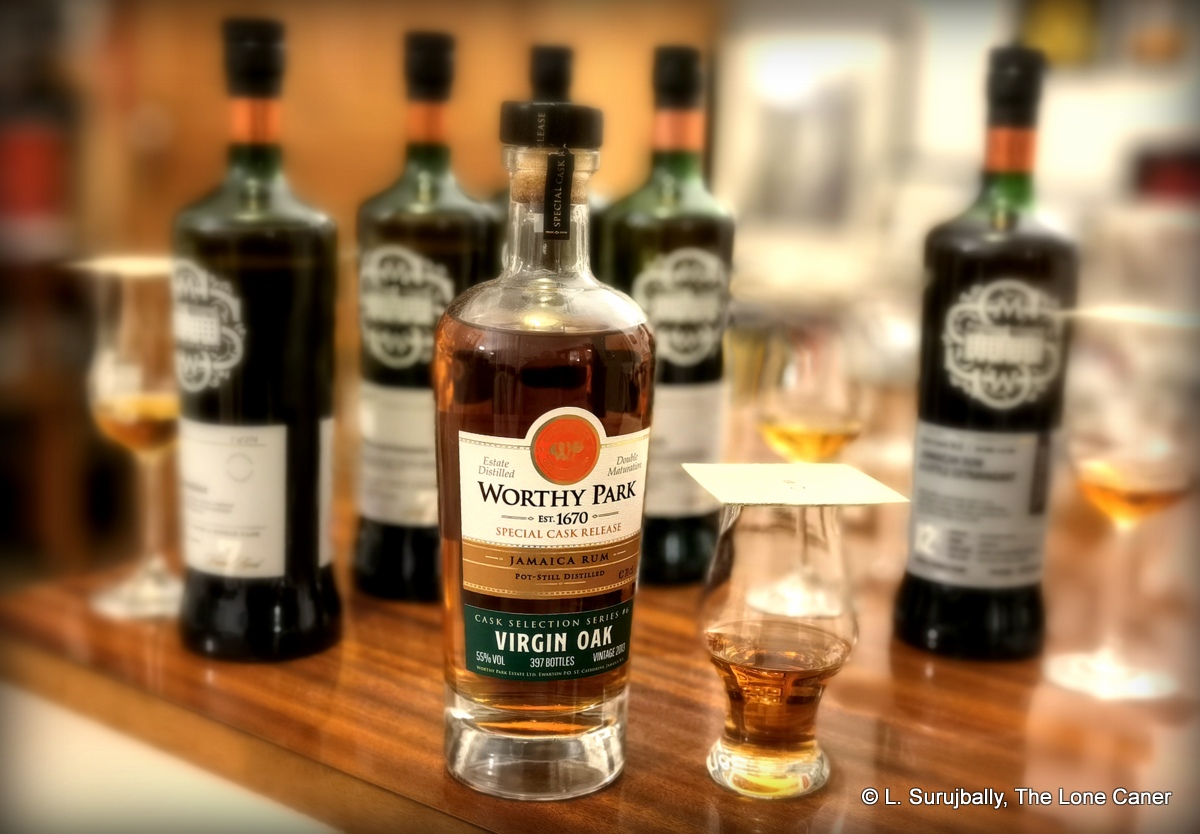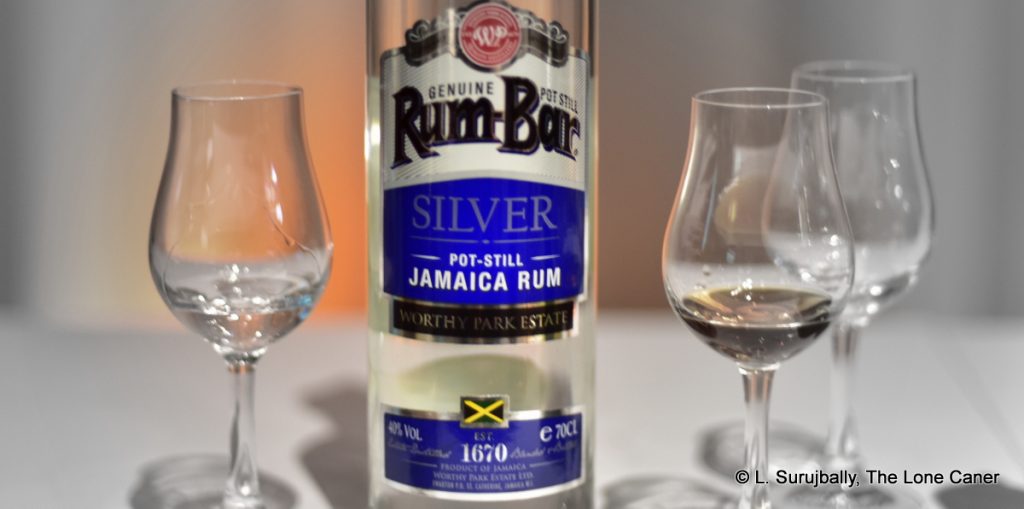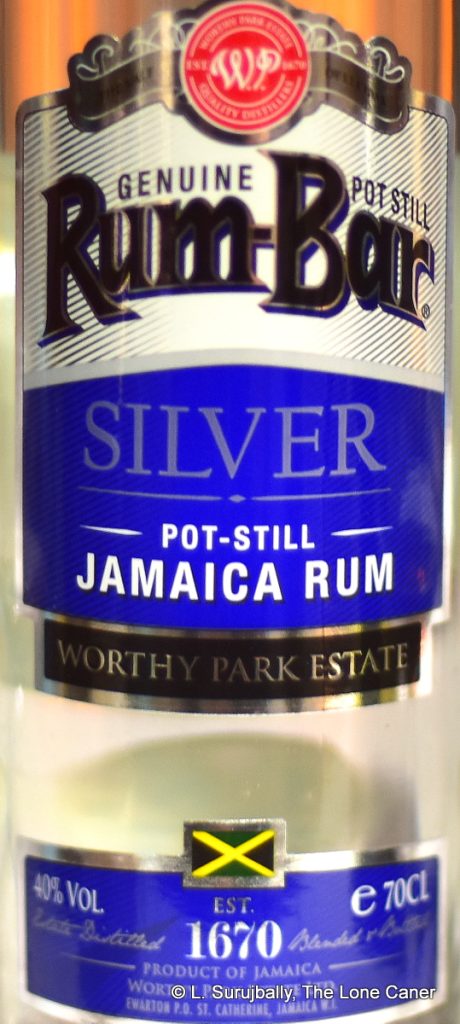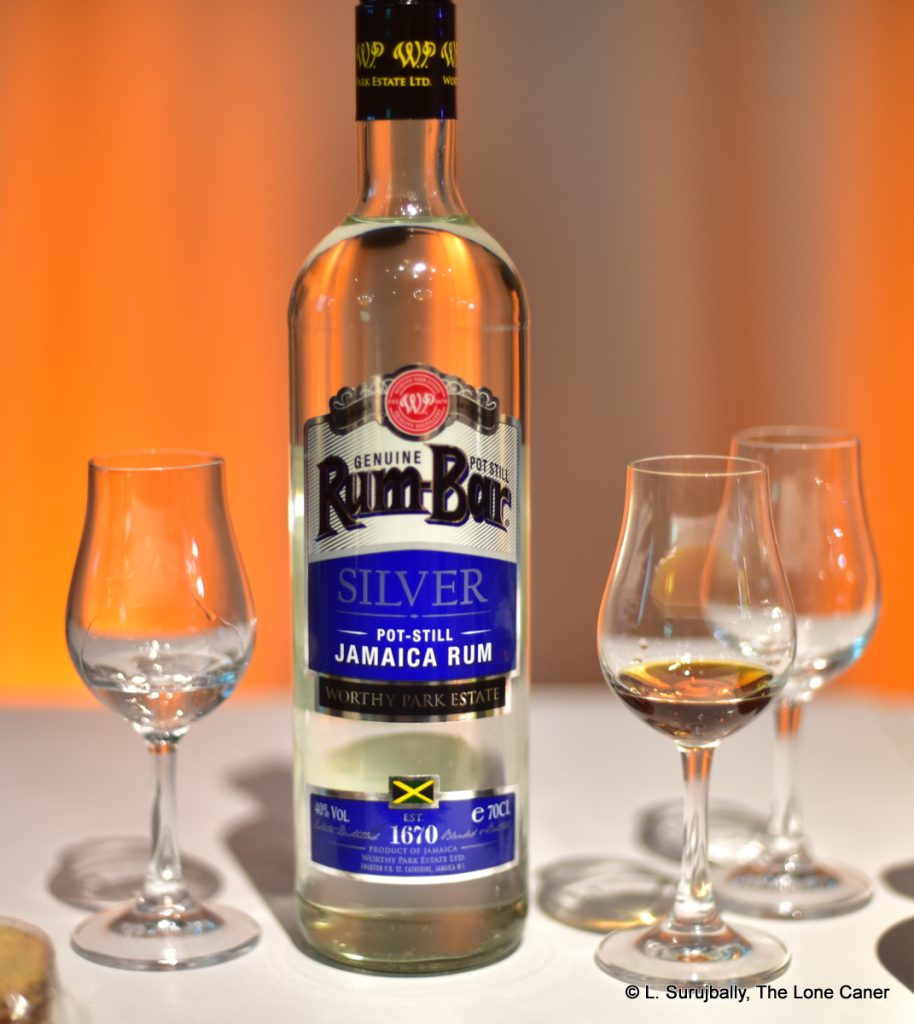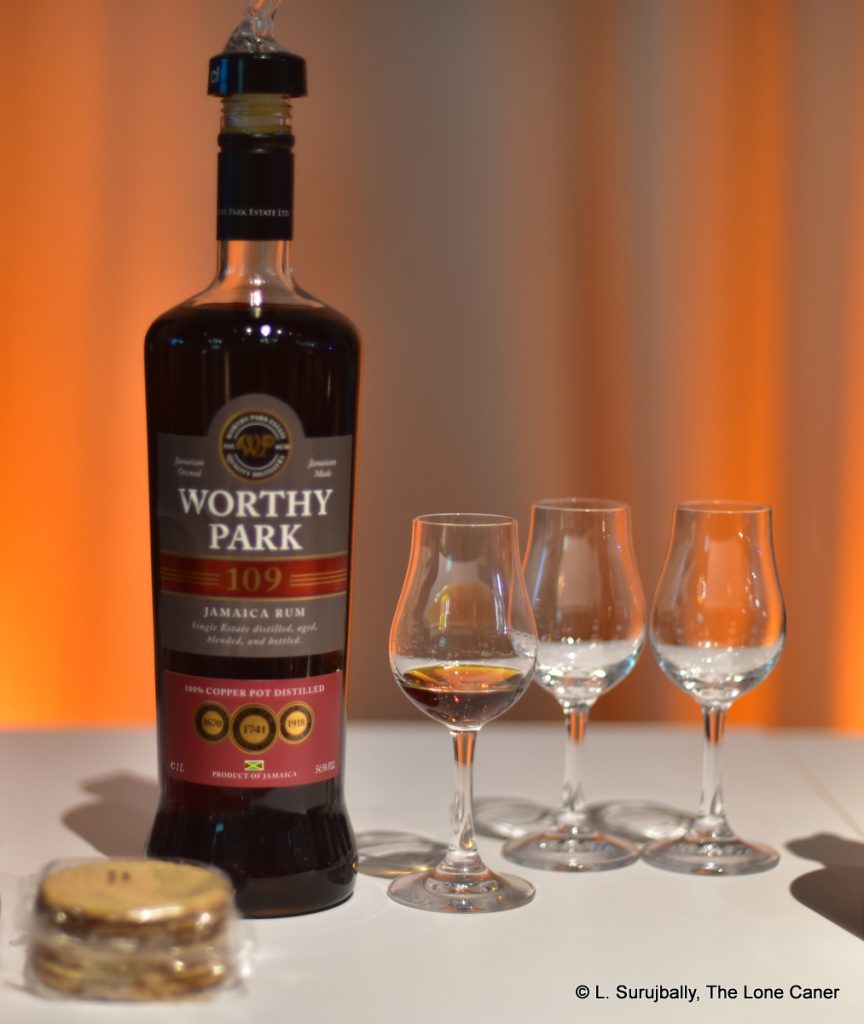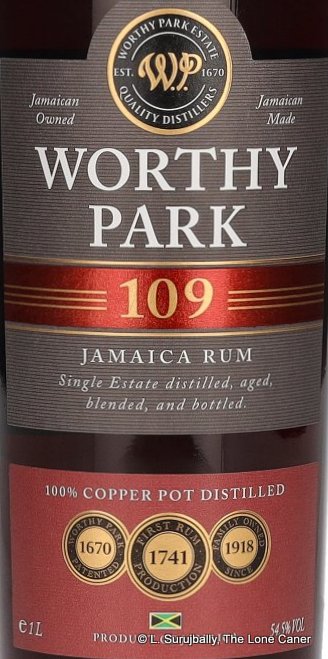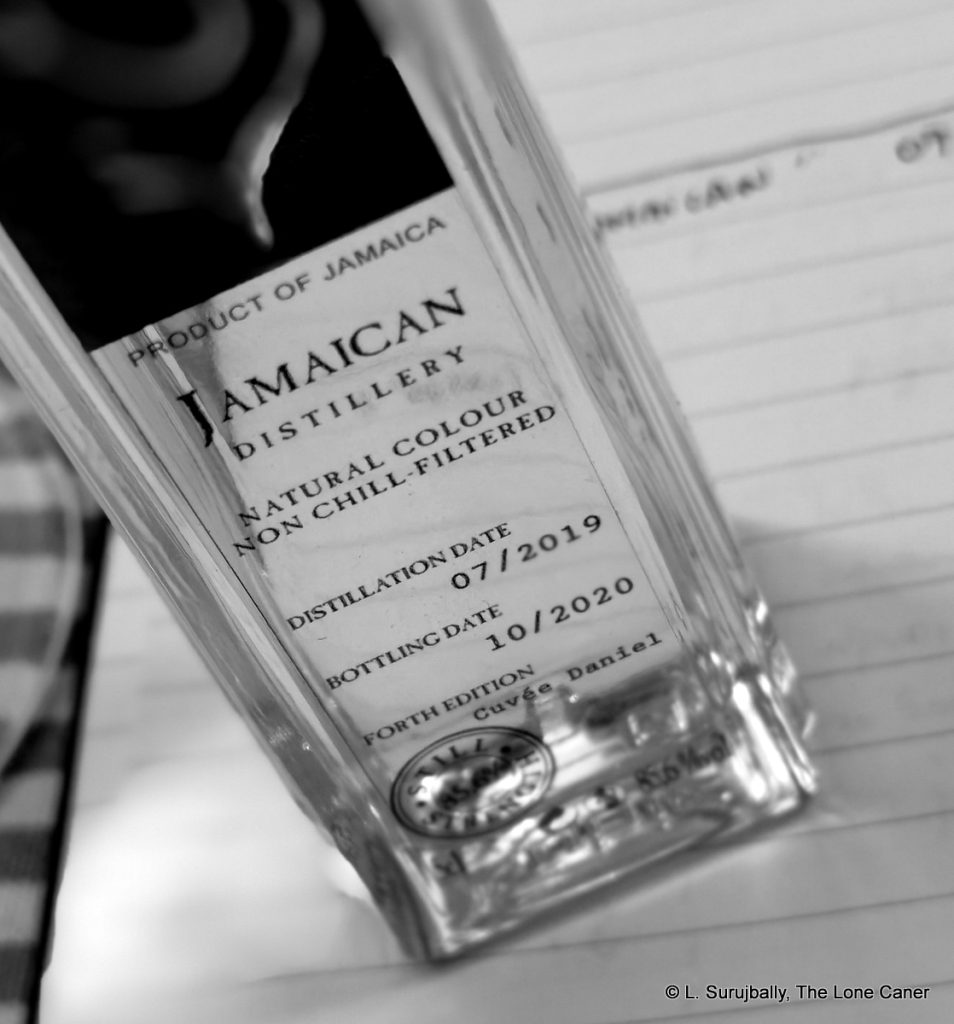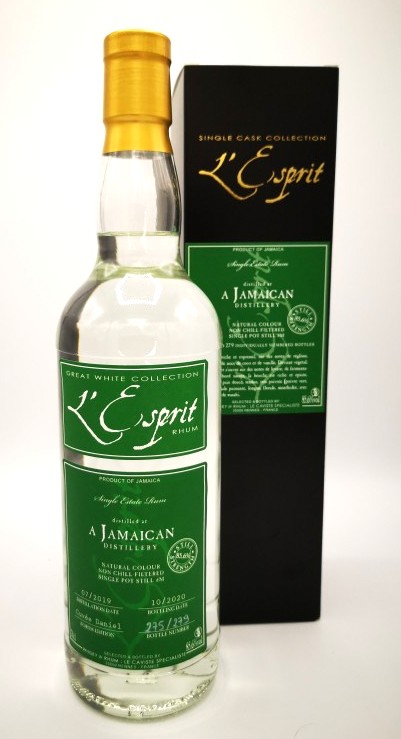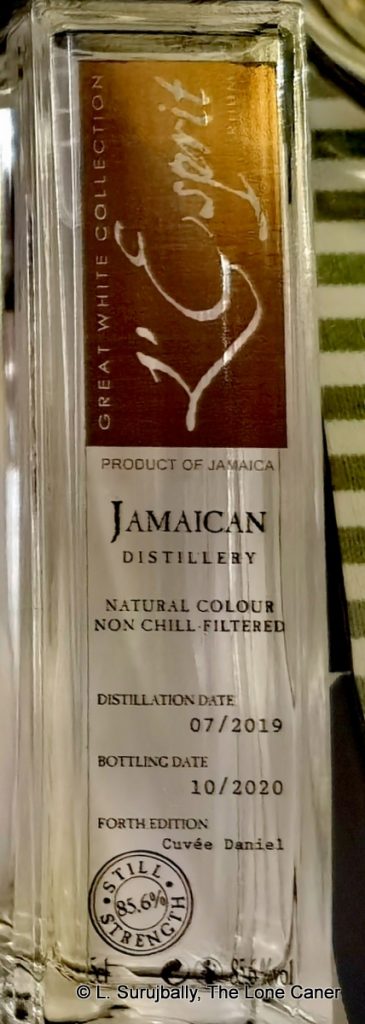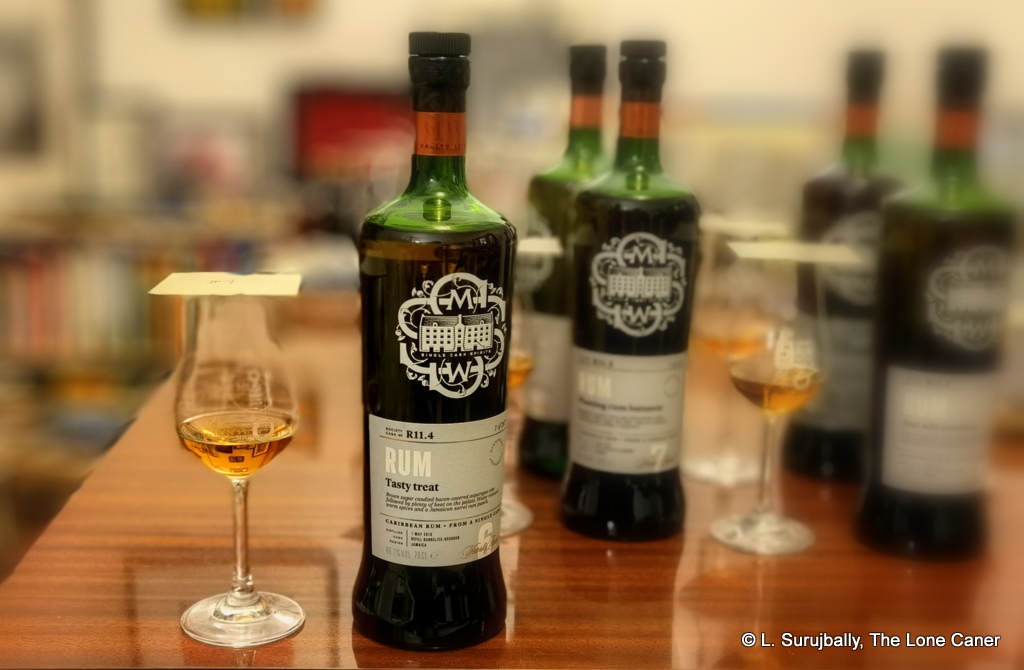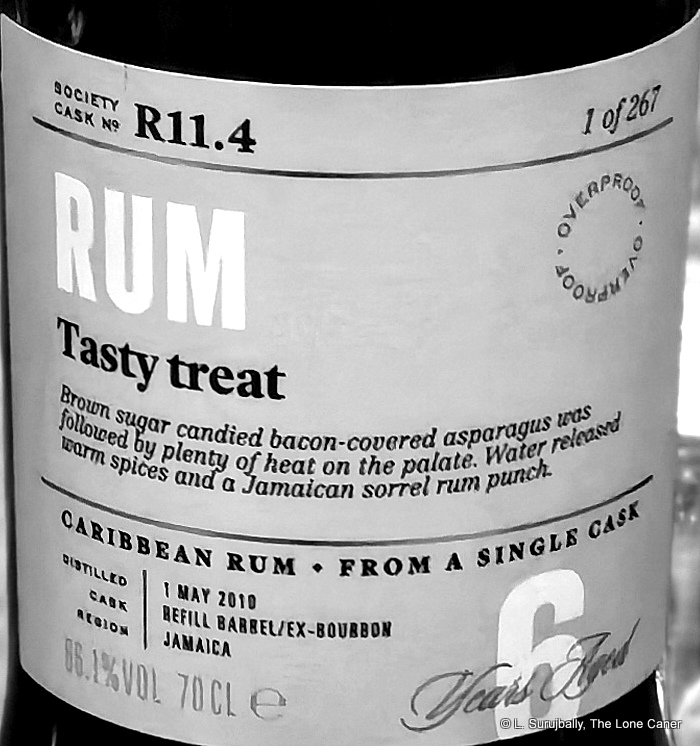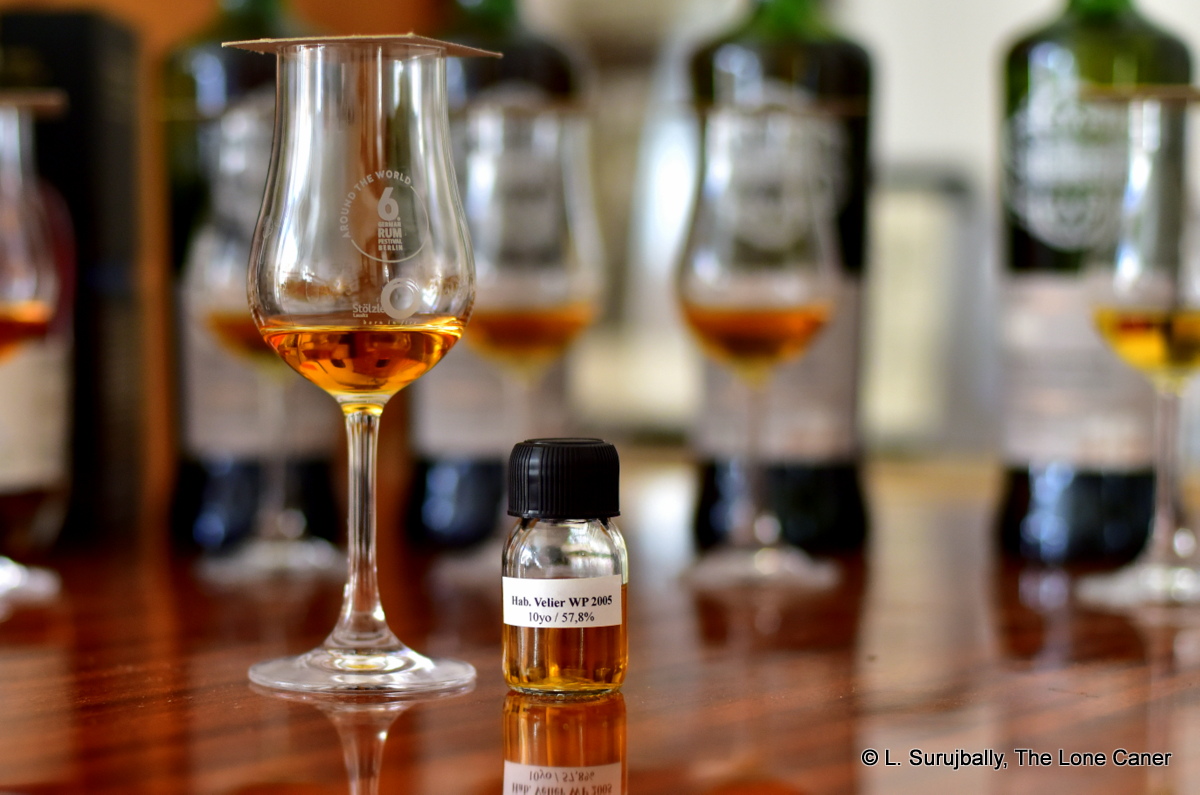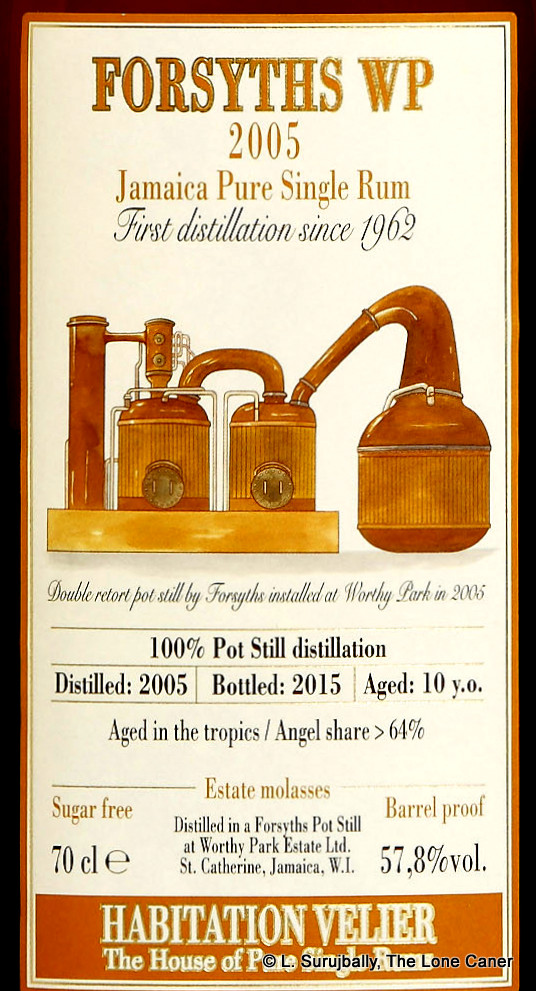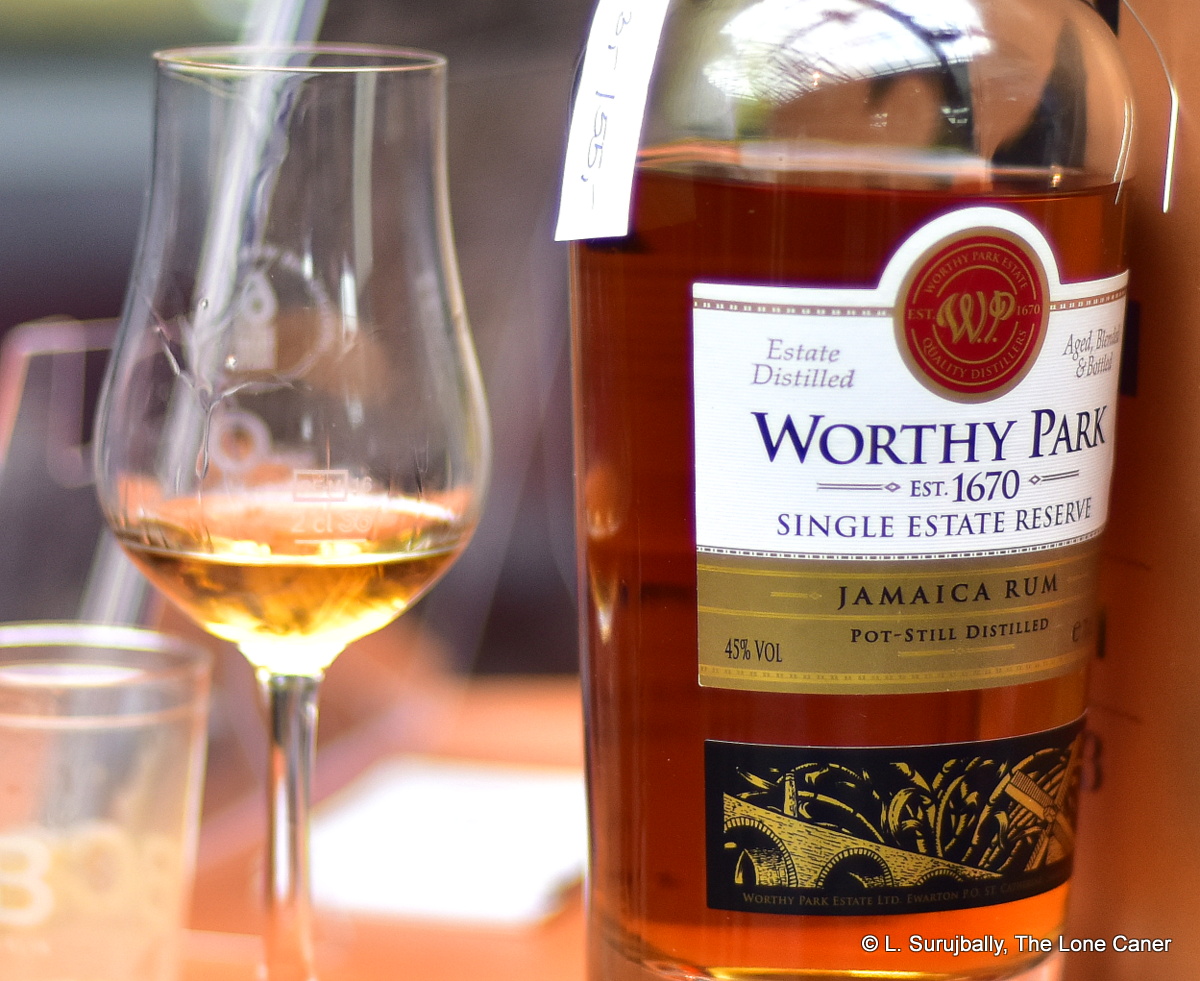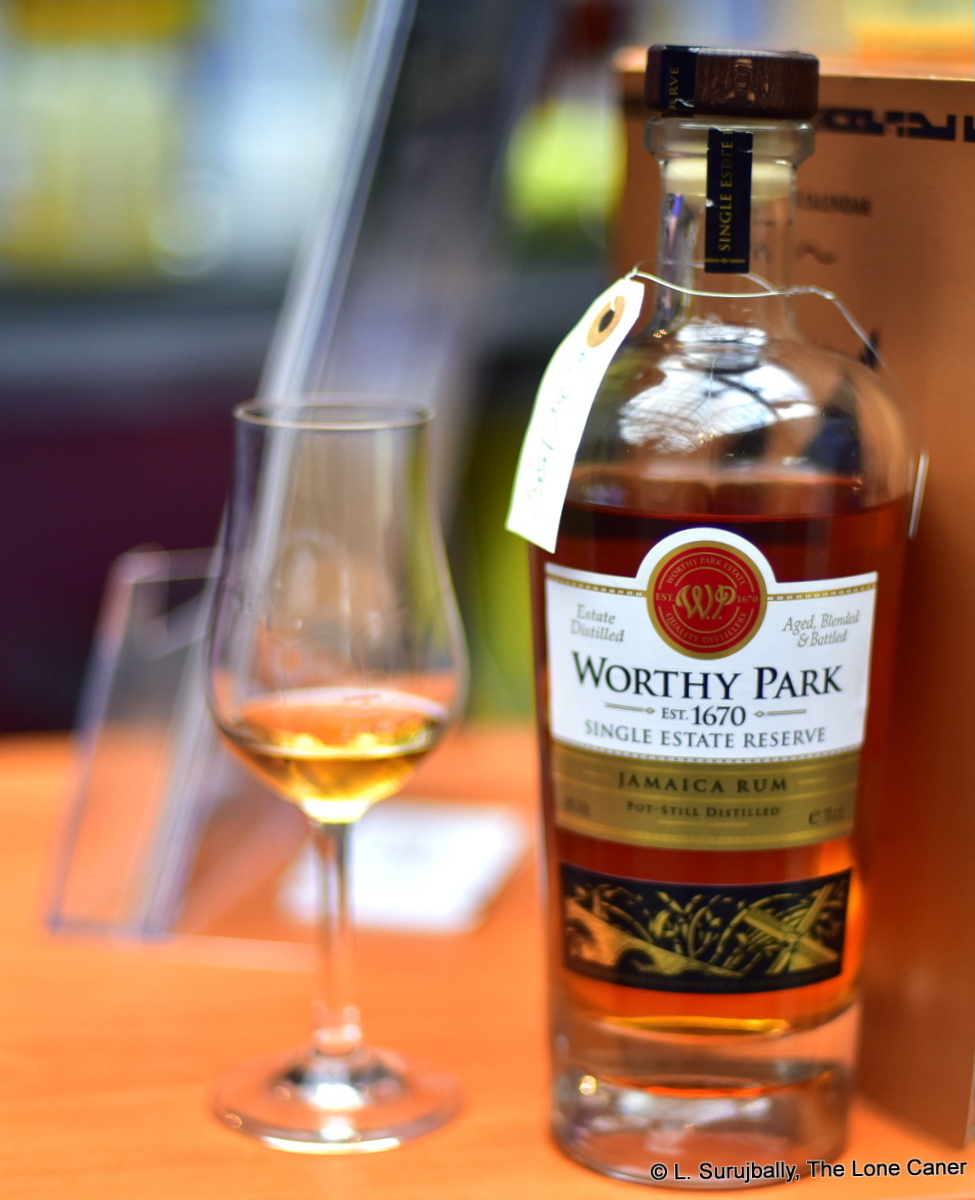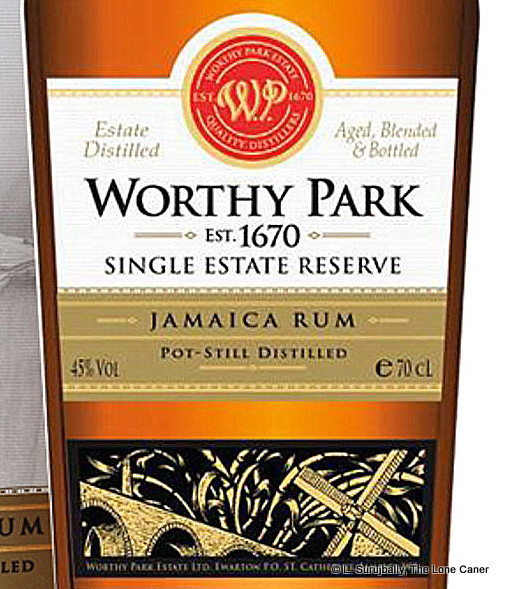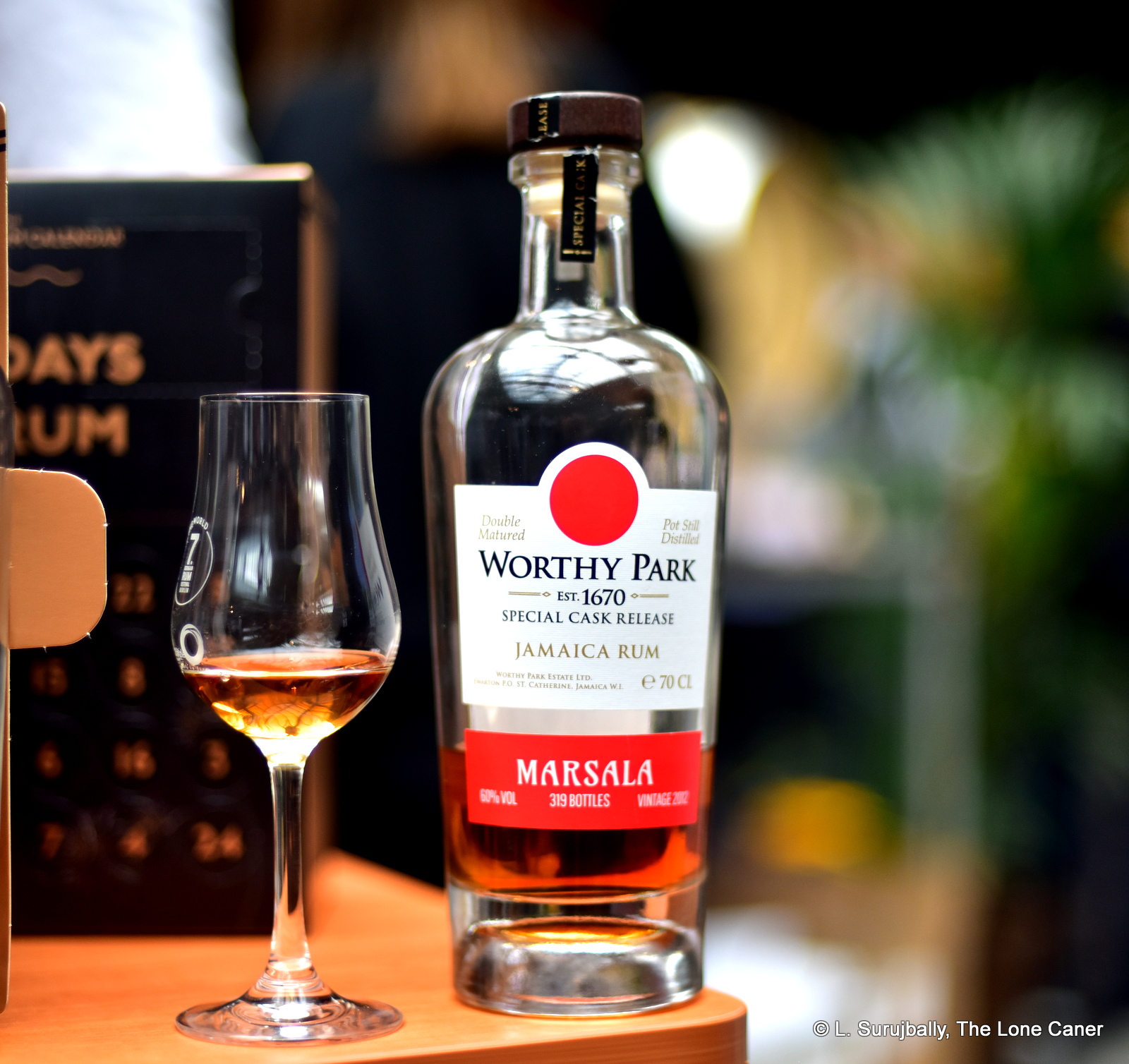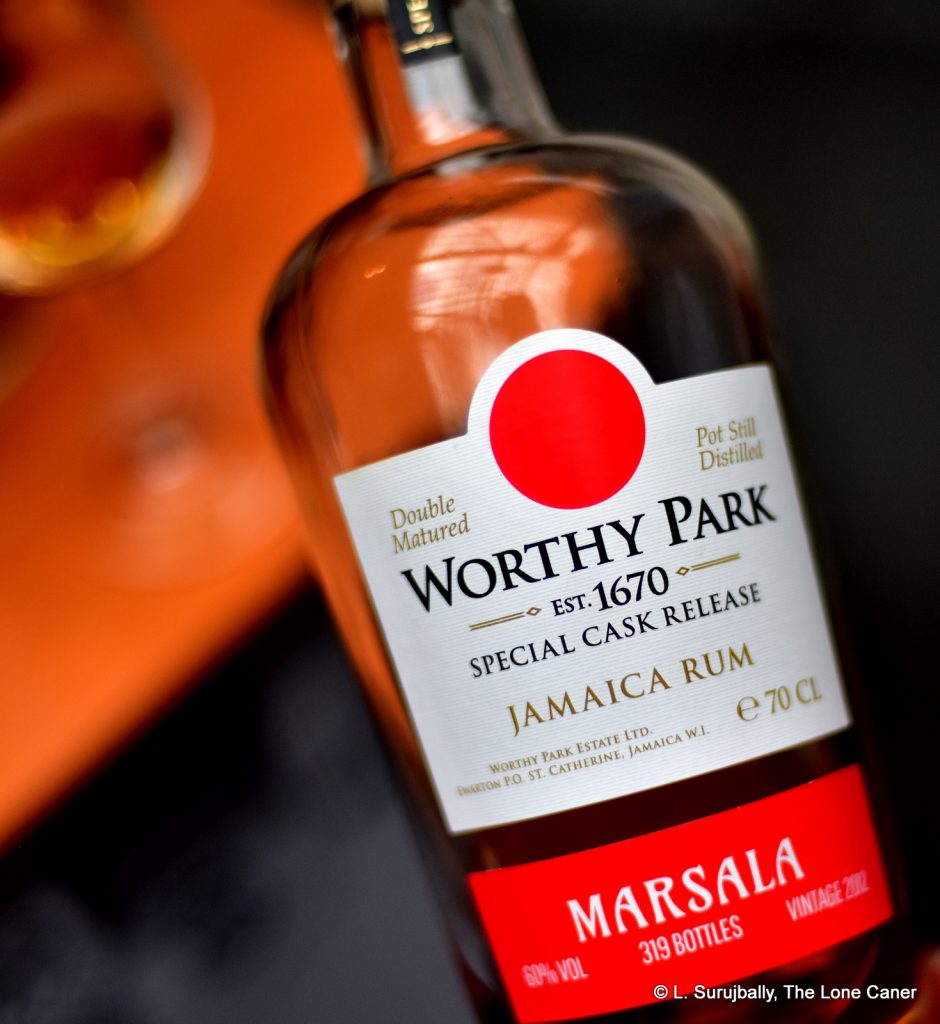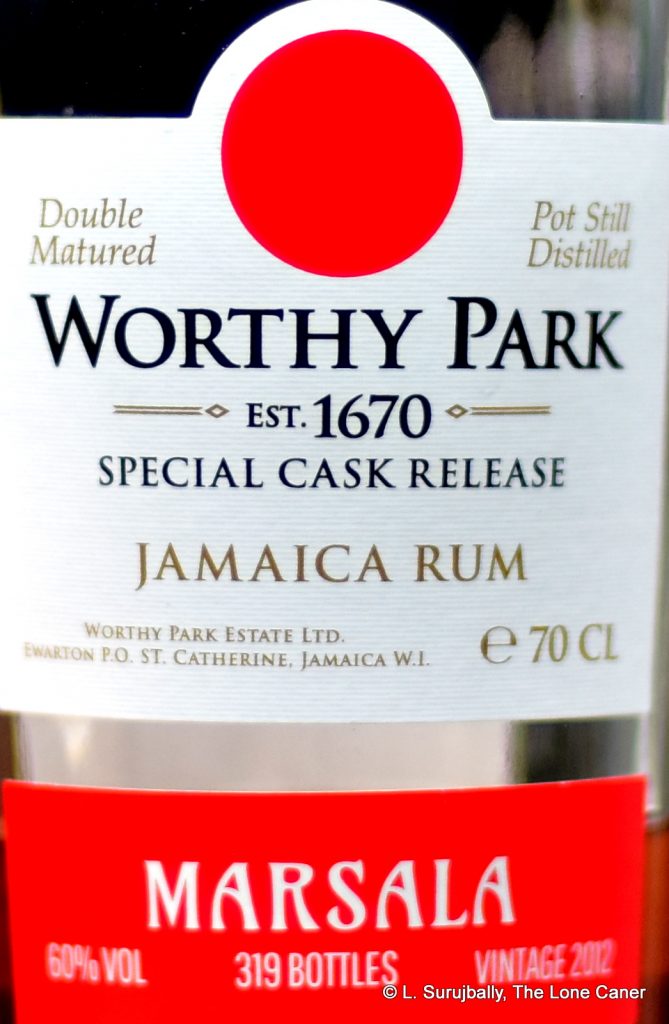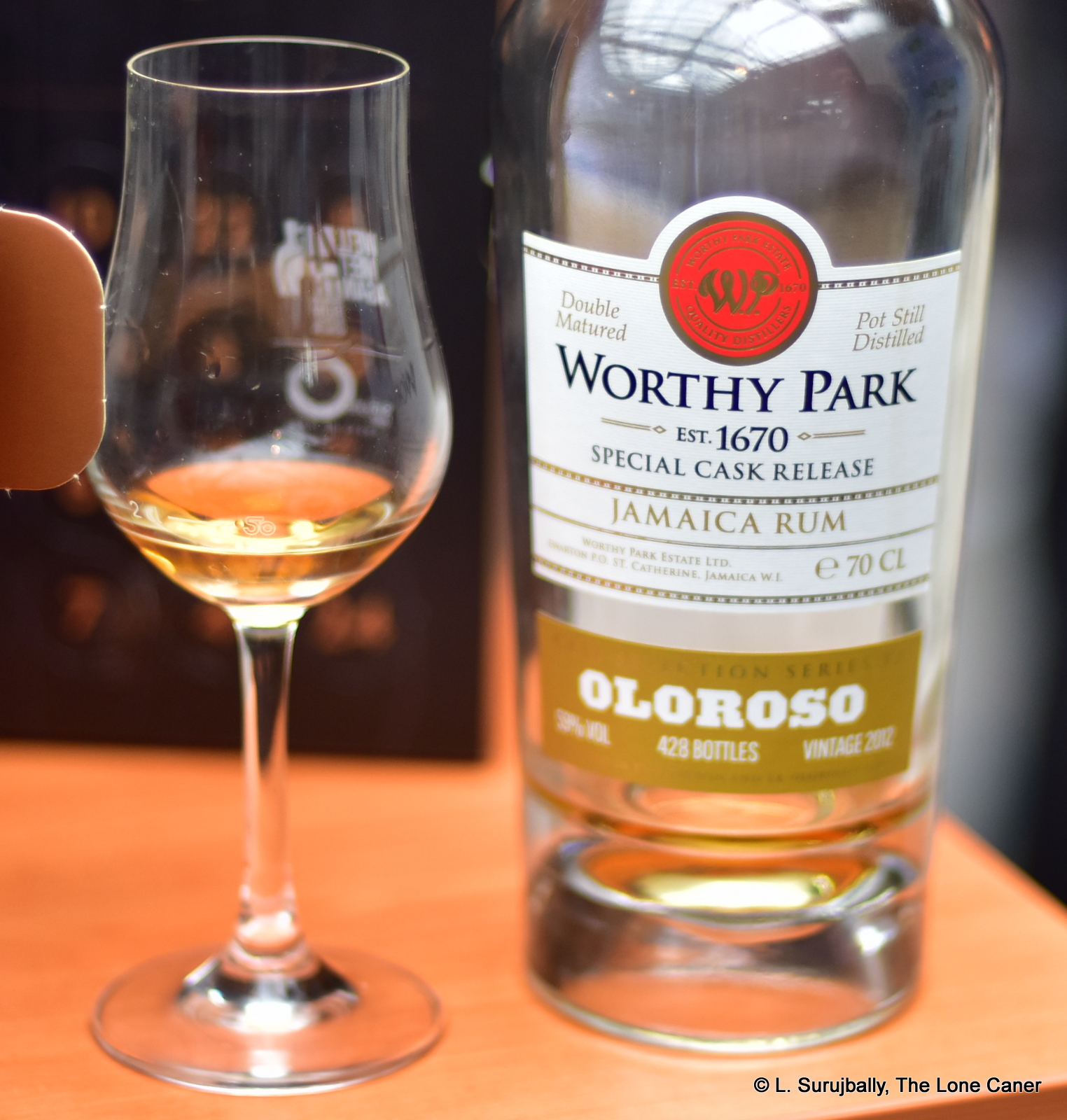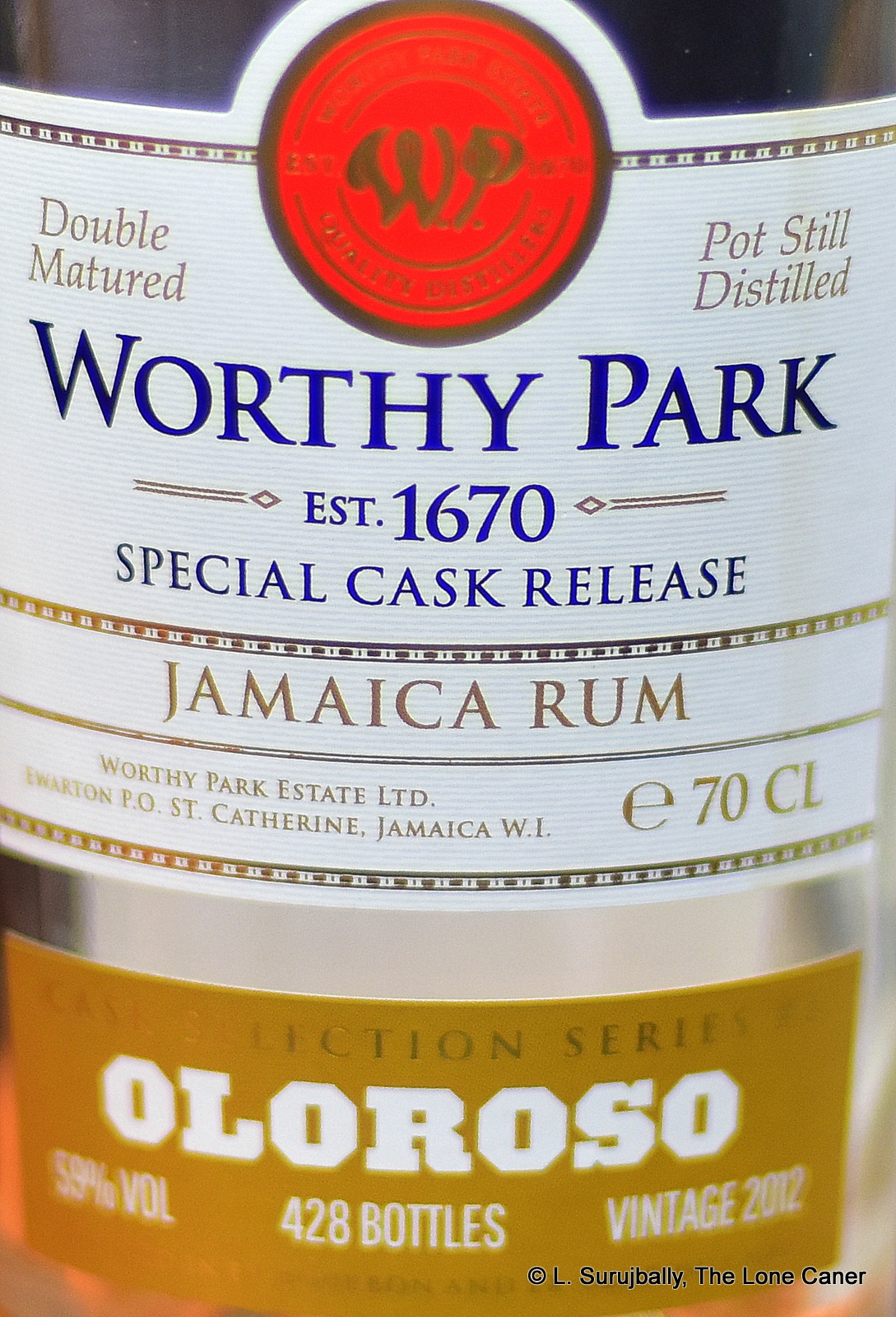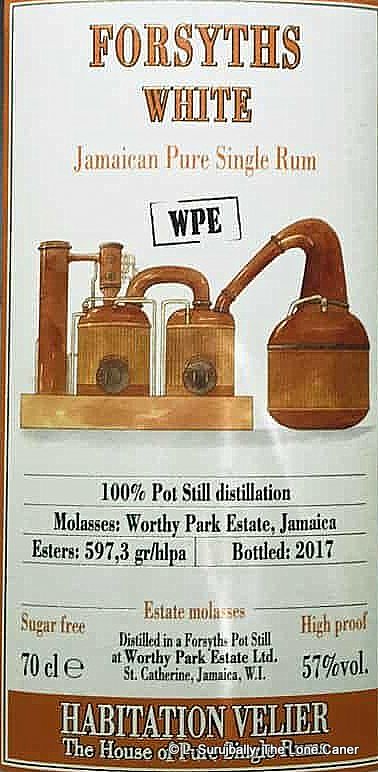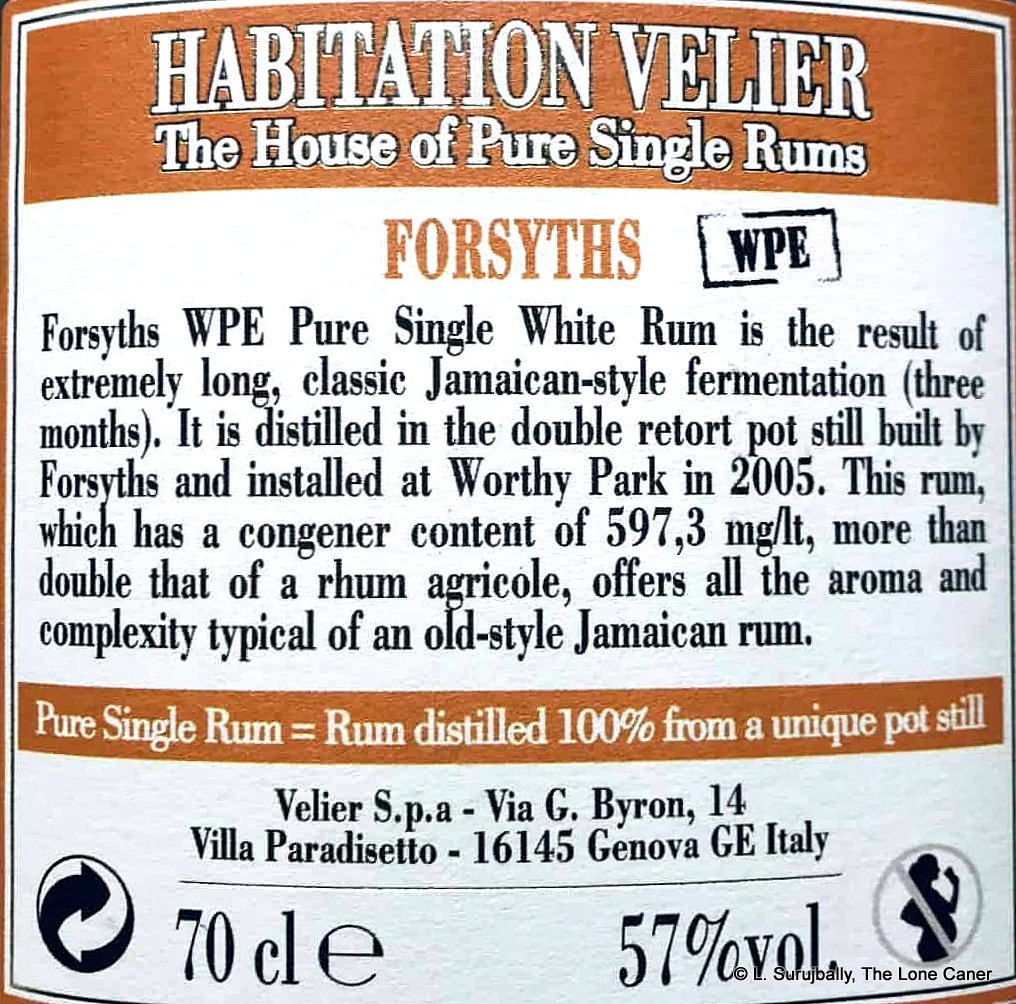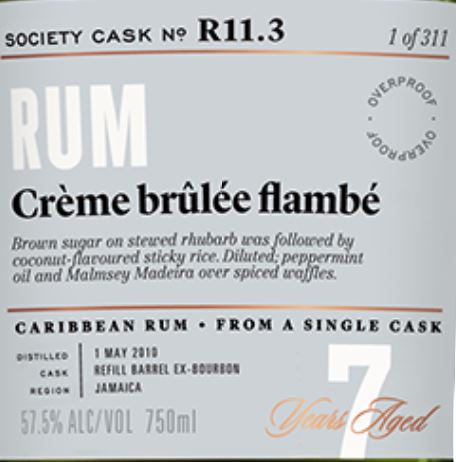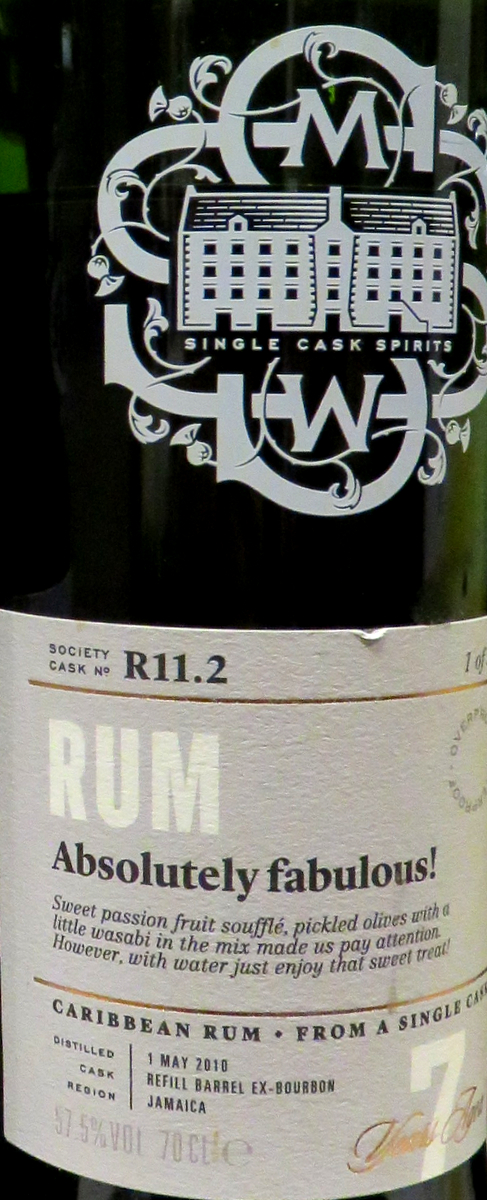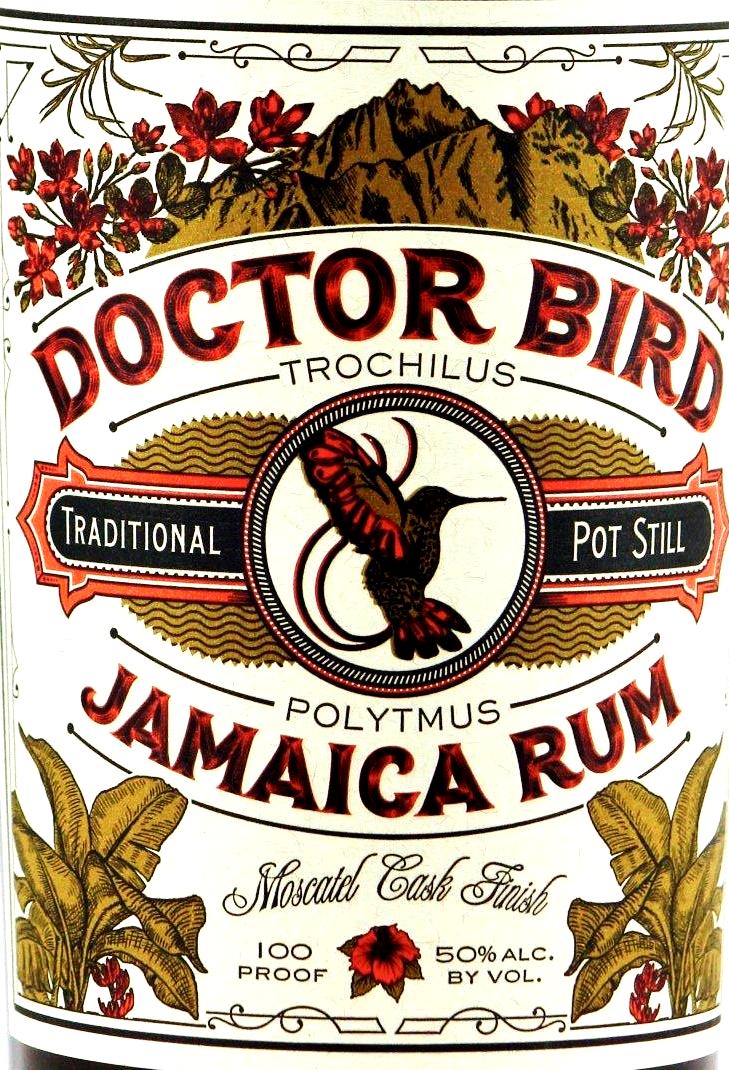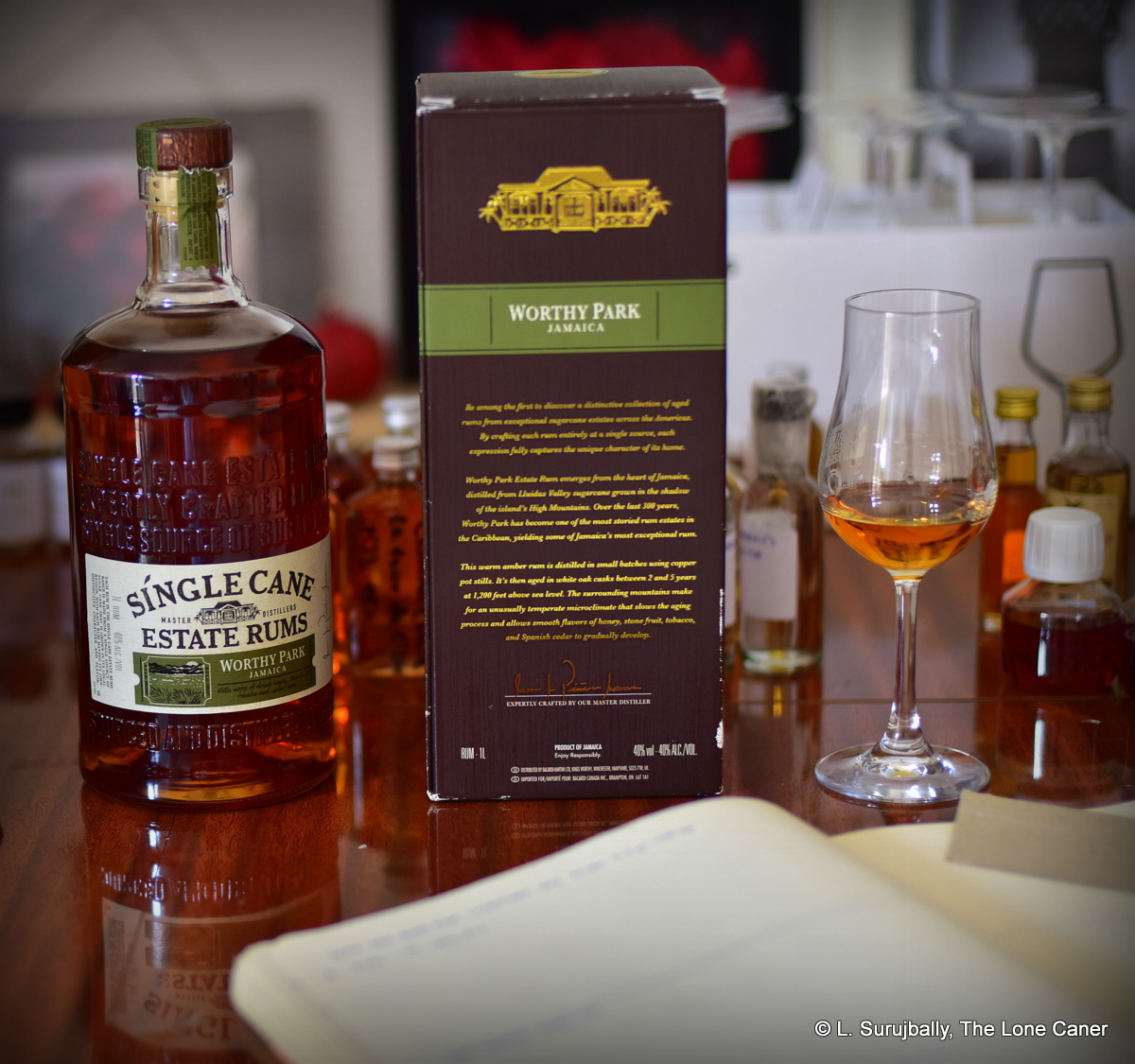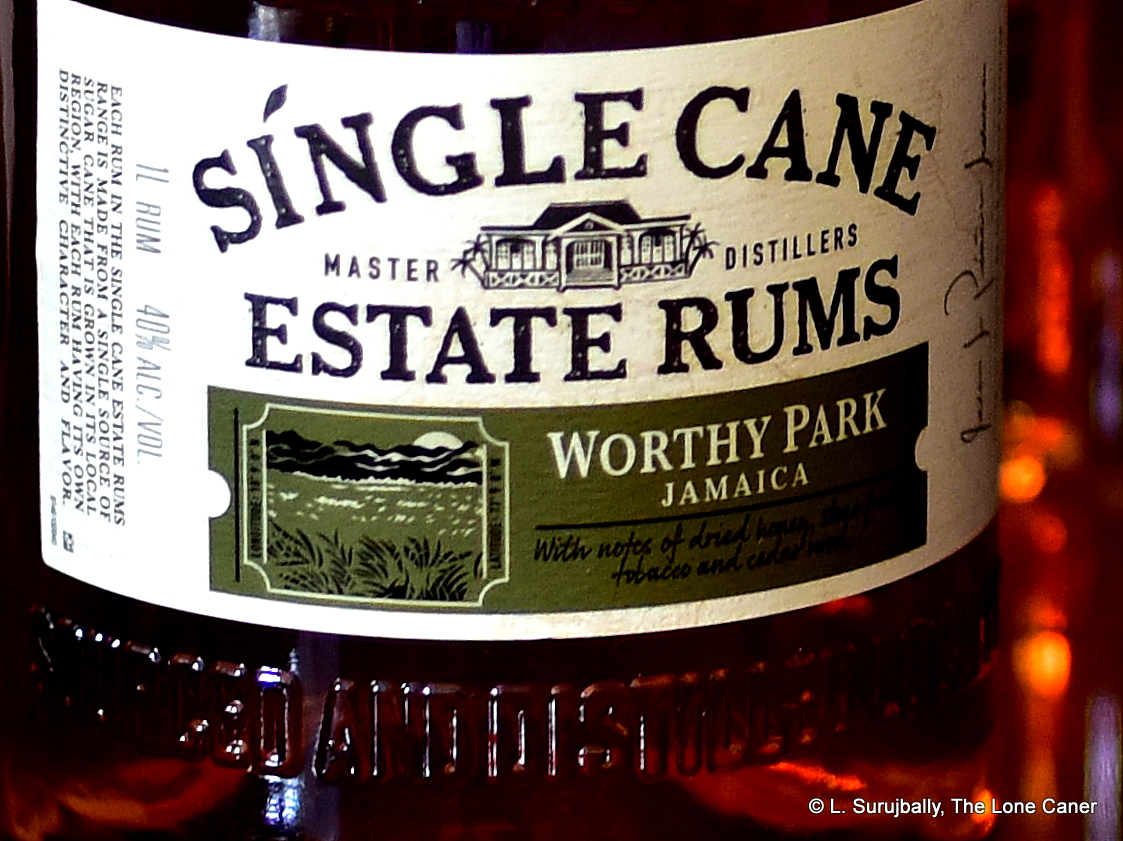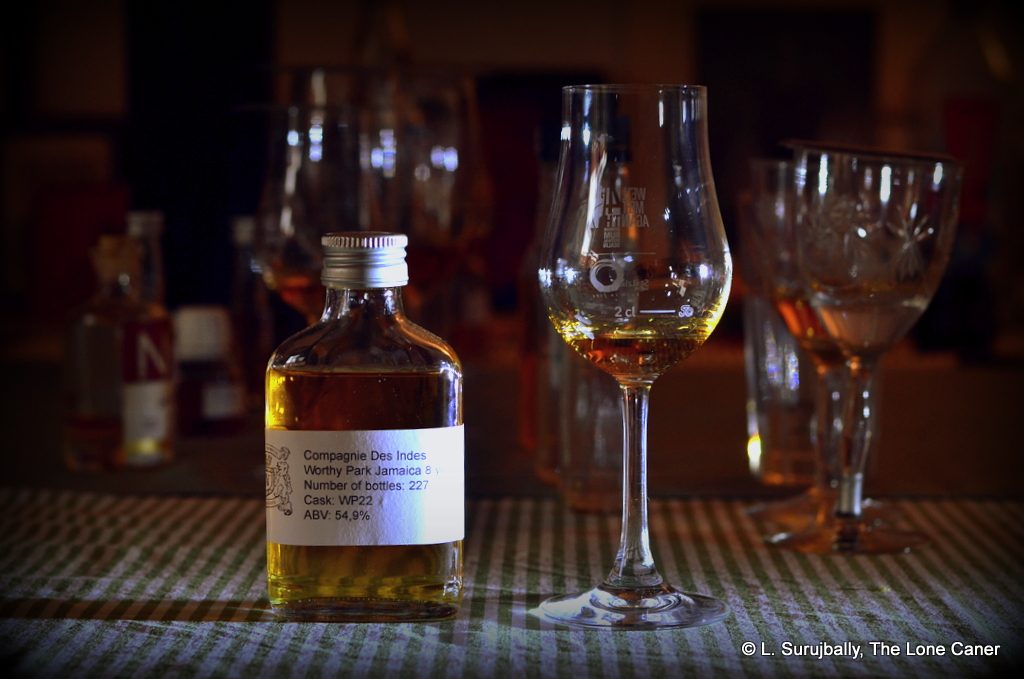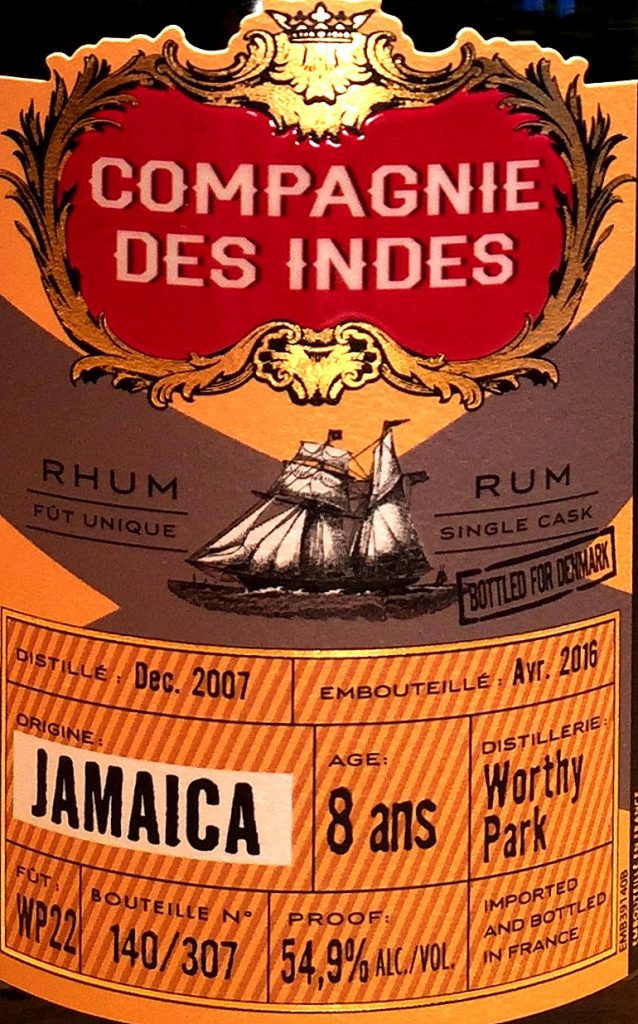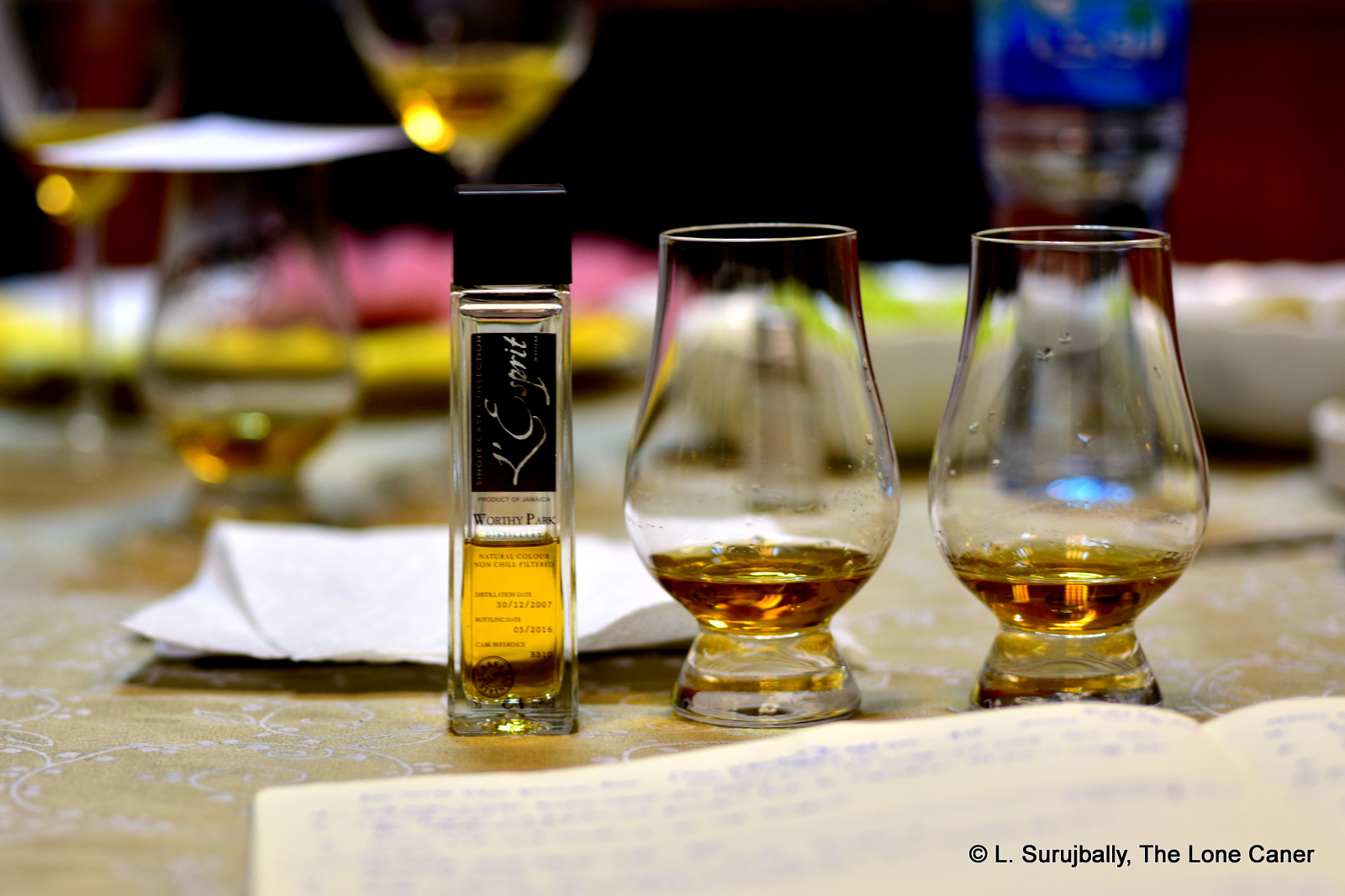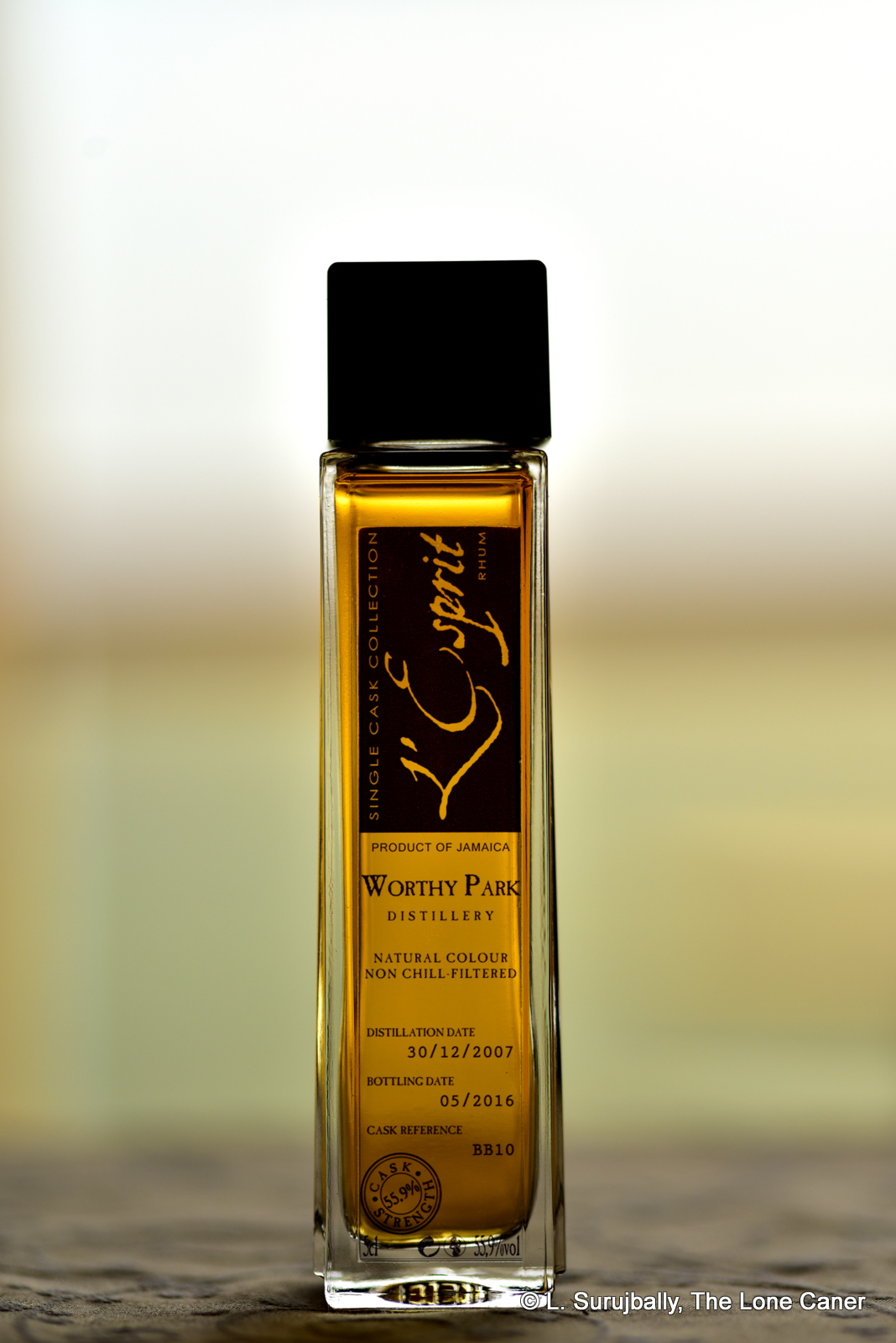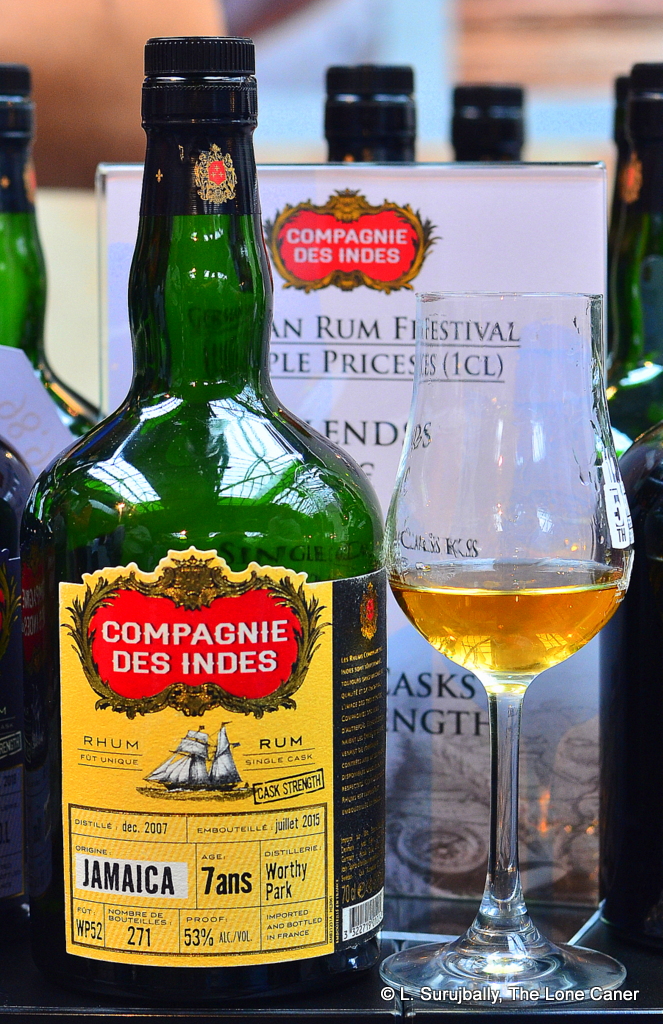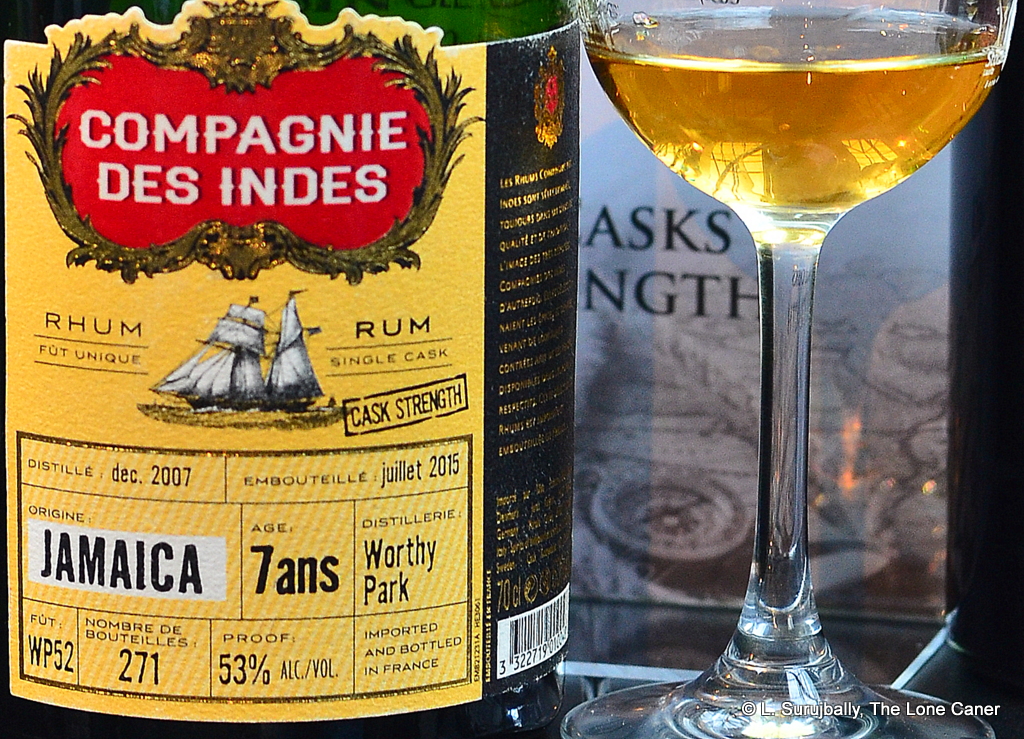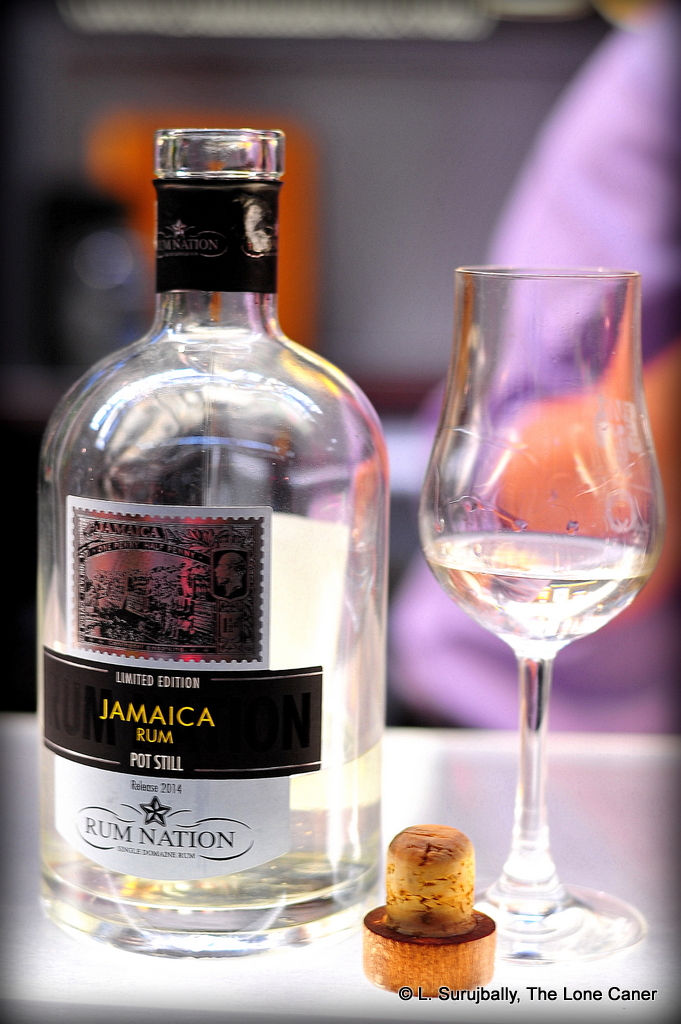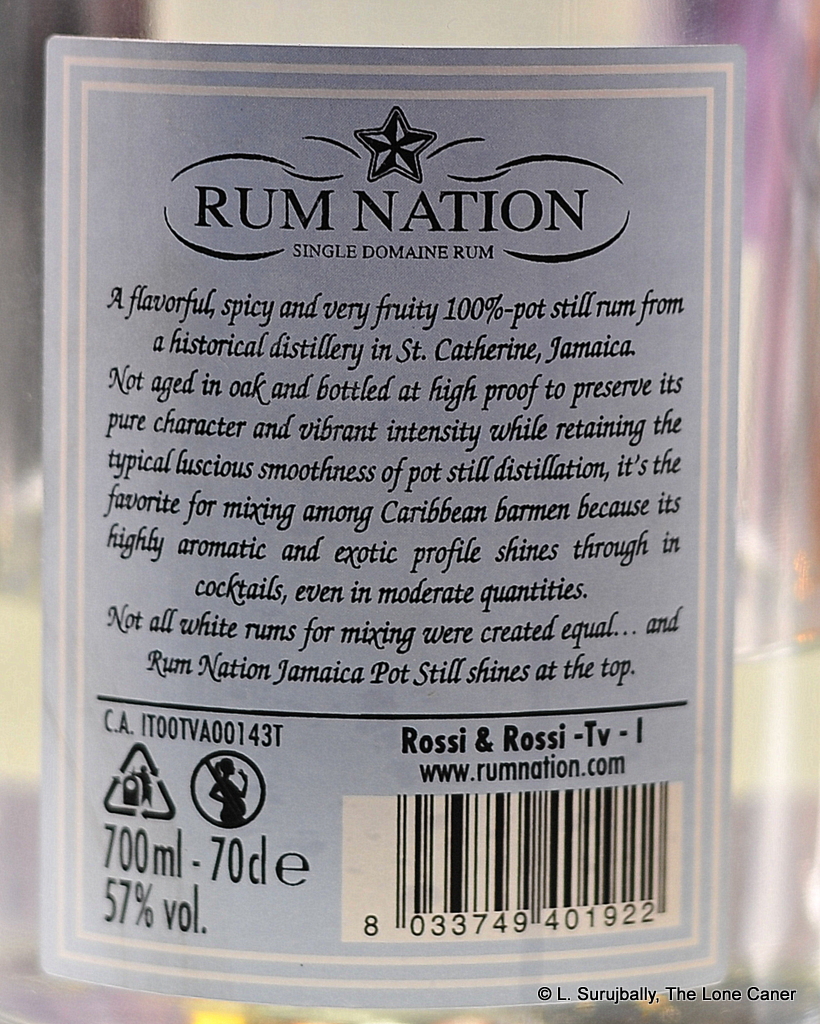Worthy Park rums at any age just seem to go for the boundary, every single time – no matter how it turns out. The results are rums of consistently decent (or high) quality, day in and day out, and I rarely find a failure, a flea-bitten dog or an also-ran glue-factory candidate in any of them – and this goes all the way back to Rum Nation’s unaged white from 2014 (now matured into one of their regular five year old rums), or the Compagnie’s 2007 7YO and 8 YO released in 2015. All of which, for their time, shook the rum world with tremors of an incipient disturbance in the Force.
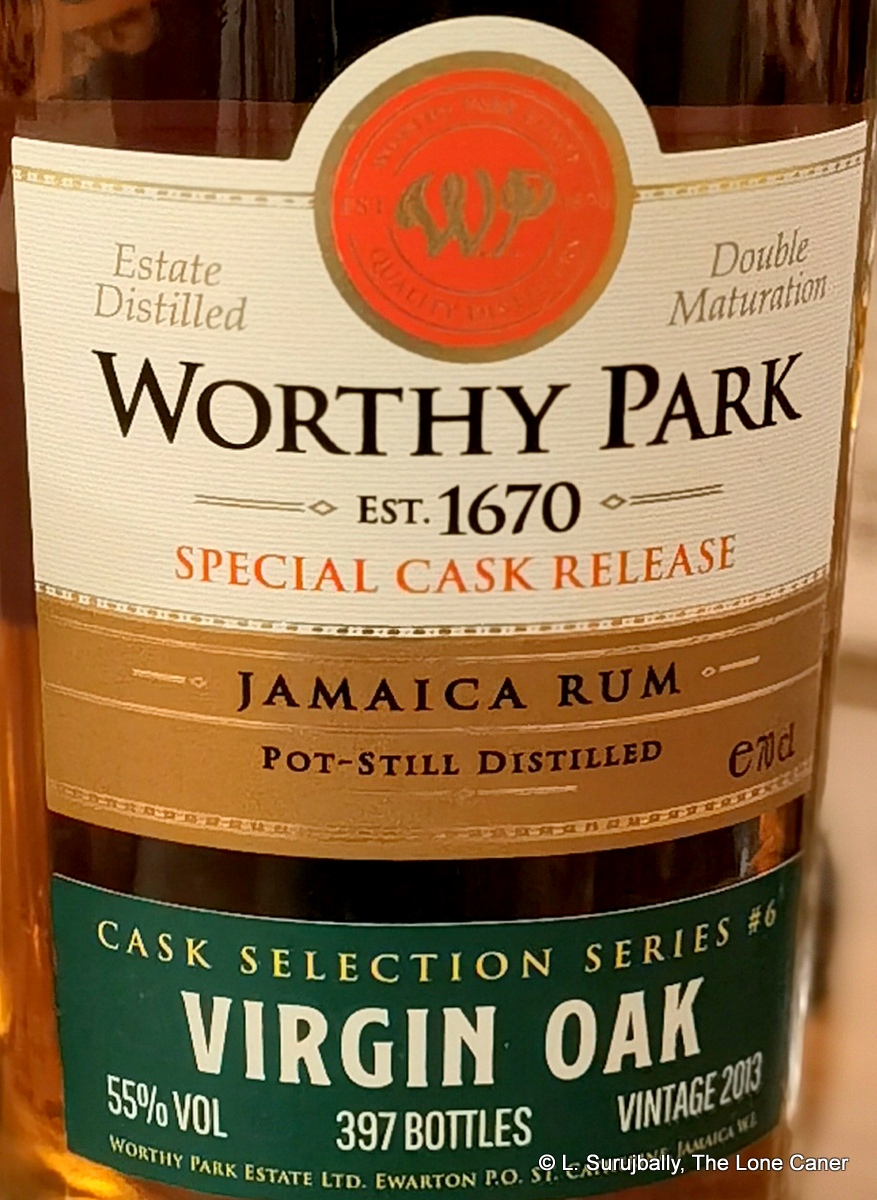 Since those early years Worthy Park has continued providing a fair amount of distillate for the use of third parties, while simultaneously developing their in house brands. These run the gamut from the entry level Rum Bar Silver and Gold (and overproof), to the 109, the Select, the Special Cask series (with various finishes or secondary maturations in porto, marsala, madeira, sherry etc), and the single estate aged rum, currently running at 12 years but likely soon to be older. There are even special versions like the recent Canadian release of the 2015 5YO, or the “Cask Selection” single barrel series. It can get a bit confusing sorting out all those “specials”, “selections” and “reserves” and good luck to anyone trying to make a collection of the lot.
Since those early years Worthy Park has continued providing a fair amount of distillate for the use of third parties, while simultaneously developing their in house brands. These run the gamut from the entry level Rum Bar Silver and Gold (and overproof), to the 109, the Select, the Special Cask series (with various finishes or secondary maturations in porto, marsala, madeira, sherry etc), and the single estate aged rum, currently running at 12 years but likely soon to be older. There are even special versions like the recent Canadian release of the 2015 5YO, or the “Cask Selection” single barrel series. It can get a bit confusing sorting out all those “specials”, “selections” and “reserves” and good luck to anyone trying to make a collection of the lot.
For those who want a funky Jamaican alternative to the mellower mass-market Appletons or more rarefied Hampdens with their ever increasing series of limited collections, Worthy Park continues to provide good value for money, even for their more youthful expressions which they are experimenting with a la Foursquare. These limited editions fall under the Special Cask line – higher ABV, limited outturns, somewhat youthful, double maturations – and some time ago I picked up No.6 of their Special Cask Releases, of which I had already tried and liked the Oloroso and Marsala editions. This one was the usual pot still distillate, tropically aged in once-used ex-Bourbon barrels for four years, then matured a second time in virgin oak casks (not the slutty kind, I gather), which then provided 397 bottles at 55%. The back label says “casks” yet one wonders exactly how many (or how few) were needed for such a small outturn. Two, maybe?
Never mind though. The age of five years and that double maturation is what’s interesting, as well as the pot still distillate – one would expect the casks to be quite active because of their little-used nature and the heat in the tropics. Nosing it suggests that it works really well to get flavours to manifest quickly, because while somewhat hot to smell, it is also deep, dark and dour at first sniff…quite delicious. Pancakes and maple syrup, creamy unsweetened yoghurt and a lovely amalgam of honey, caramel, toffee, nougat and white chocolate. It may have been the casks, it just seems to me that aroma-wise the pot still sour funky fruits seem to have been kept away, though faint traces of pineapple, strawberries and overripe bananas and oranges do linger for those with long snoots; and these are joined by notes of salt crackers, gherkins and balsamic vinegar (one of those fancy ones, from figs maybe).
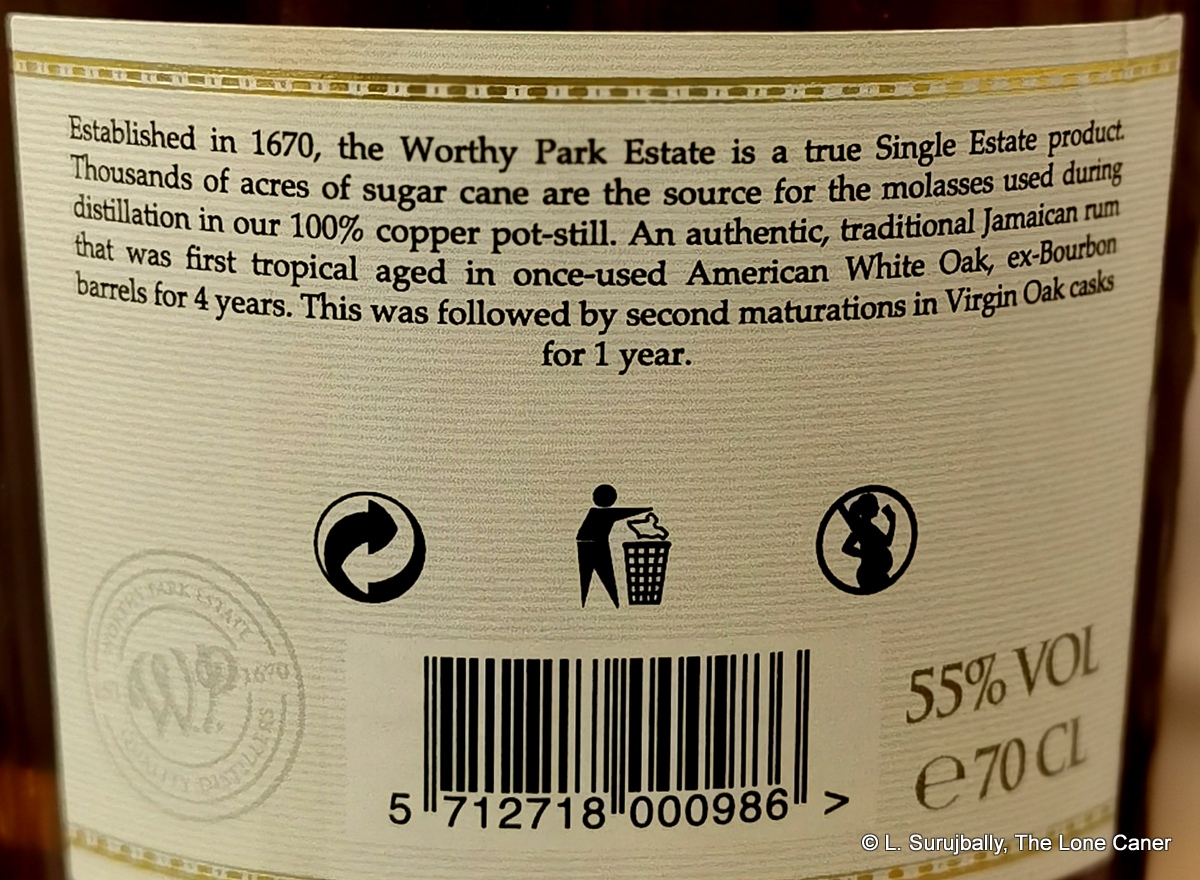 The absence of the funkiness is, on the palate, more striking, and would make anyone trying this blind to wonder whether it conformed to a particularly Jamaican profile at all. The strength is solid and bearable at 55%, no worries there; it starts off with traditional notes of caramel, toffee, light molasses and vanilla, before segueing into some olives and brine, a touch of sweet soya, and a subdued panoply of dark fruits – prunes, plums, blackberries, that kind of thing. Tucked in way at the back are the oddballs, of which I wish there were more – some iodine, charcoal, cooking herbs and lemon. Nothing overbearing, just really interesting, and set off by a pleasant, long and dry finish redolent of aromatic pipe tobacco, red wine, brine and some sour red grapes.
The absence of the funkiness is, on the palate, more striking, and would make anyone trying this blind to wonder whether it conformed to a particularly Jamaican profile at all. The strength is solid and bearable at 55%, no worries there; it starts off with traditional notes of caramel, toffee, light molasses and vanilla, before segueing into some olives and brine, a touch of sweet soya, and a subdued panoply of dark fruits – prunes, plums, blackberries, that kind of thing. Tucked in way at the back are the oddballs, of which I wish there were more – some iodine, charcoal, cooking herbs and lemon. Nothing overbearing, just really interesting, and set off by a pleasant, long and dry finish redolent of aromatic pipe tobacco, red wine, brine and some sour red grapes.
It’s really quite impressive what Worthy Park has done with a mere five years of ageing, and shows why they have developed the reputation they do – to the extent where a friend of mine in Saskatchewan asked me to get a WP Canadian-only release for him (same age and lacking any ageing- or finishing-flourishes) even though it exceeded his normal budget for such things. The tastes are solid, the aromas are well integrated and if it’s a bit hot and rough around the edges and doesn’t sport anything seriously original, it’s still a surprisingly varied and interesting rum. At the time when I bought the bottle everyone was going apesh*t over the just-released WP 109: me, I shrugged and reached into the slightly more recent past to get this one, and still think that while both are good, this is the better buy.
(#1009)(85/100) ⭐⭐⭐½
Other notes
- Of course, as soon as I saw “No. 6” I couldn’t let it rest – which ones were 1-5, right? I started a list of the Special Cask Releases but the numbering scheme and inconsistencies of label-naming have thus far defeated even a mind as organised and agile as mine: there are too many gaps and similar names to make the list exhaustive (I’ve sent a note to Zan Kong to assist). But here’s what I came up with:
- Special Cask Release #8 | 52% | 2013-2018 | 2-4 YO | Quatre Vins | 1318b
- Special Cask Release #7 | 55% | 2013-2018 | 5 YO | Oloroso
- Special Cask Release #6 | 55% | 2013-2018 | 5 YO | Virgin Oak | 397b
- Special Cask Release #4 | 58% | 2013-2018 | 5 YO | Madeira
- Special Cask Release #3 | 57% | 2013-2018 | 5 YO | Sherry
-
- Special Cask Release #x | 59% | 2012-2017 | 5 YO | Oloroso
- Special Cask Release #x | 45% | 2010-2020 | 10 YO | Port
- Special Cask Release #x | 45% | 2010-???? | 10 YO | Madeira
- Special Cask Release #x | 60% | 2012-2017 | 5 YO | Marsala
- Special Cask Release #x | 59% | 2008-2013 | 5 YO | Oloroso | 428b
- Special Cask Release #x | 56% | 2008-2017 | 9 YO | Port | 585b
